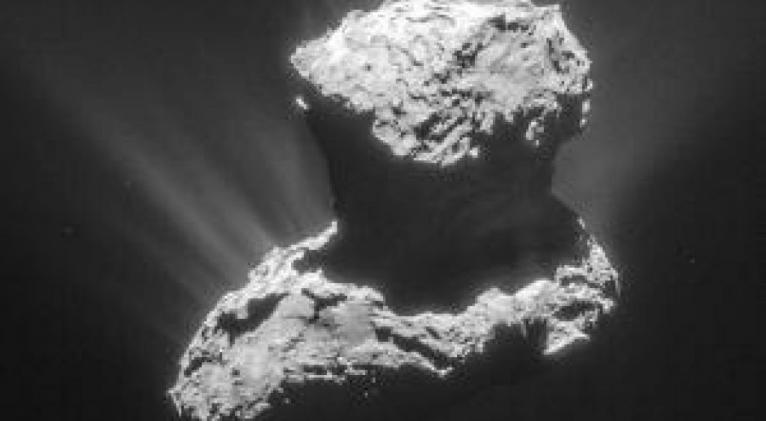Philae's sensors show comet 67P has almost no magnetic field
especiales

The probe shut down a few days after its bumpy landing, and ESA's mission scientists still haven't been able to find it. But they have been busy analysing the data gathered during while Philae was active.
Today they presented results from the spacecraft's magnetic sensors at the European Geosciences Union General Assembly in Vienna, Austria. These show that Philae and its mothership Rosetta, which is currently in orbit around 67P, detected similar readings throughout Philae's descent. The results are also published in the journal Science.
"You see almost no difference", said Karl-Heinz Glassmeier, who is in charge of the magnetometer on Rosetta, during a press conference. In other words, the comet has almost no discernible magnetic field – if it had one, Philae would have seen a different signal to the more distant Rosetta.
That's a surprise, because it was thought that magnetic forces played a role in assembling cometary material into larger planetary-building blocks during the formation of the solar system.
Cosmic lego
These readings of the weak magnetisation on 67P suggest that magnetic forces were too small to bring together building blocks larger than a metre in size, although they may have played a role on smaller scales. "We feel that the fields must have been much smaller in the earlier solar system than previously thought," said Glassmeier.
"If this comet is representative of all the others, there is no chance you can have accretion with magnetic forces," said Hans-Ulrich Auster, who is in charge of Philae's magnetometer. Instead, it is likely that collisions between smaller particles led to one particle growing larger by chance, eventually building up enough bulk for gravitational forces to dominate and pull more material together.
Rosetta is still searching for Philae and conducting its own scientific investigations, but the spacecraft has been forced out to a more distant orbit of 100 kilometres after dust and gas streaming off the comet interfered with its navigation instruments.
"We have lost some of the close observations," said project scientist Matt Taylor. "We are looking at what can be done to mitigate this."













Add new comment